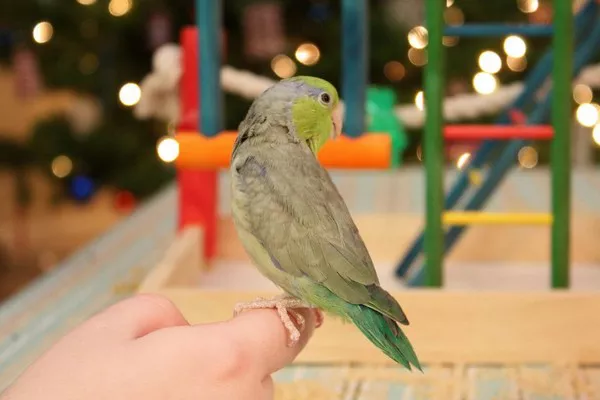Sun Conures (Aratinga solstitialis), known for their vibrant plumage and engaging personalities, are a popular species among bird enthusiasts. These striking parrots exhibit a range of behaviors that are both fascinating and crucial to their well-being. One of the most intriguing behaviors observed in Sun Conures is the frequent shaking or fluttering of their wings. This seemingly simple action can actually convey a wealth of information about their physical state, emotional condition, and environmental interactions. This article delves into the reasons behind wing shaking in Sun Conures, providing a comprehensive understanding of this behavior from various scientific perspectives.
Understanding Sun Conure Behavior
Before examining the specific behavior of wing shaking, it is essential to understand the general behavior and characteristics of Sun Conures. This knowledge provides context for interpreting their actions and helps in distinguishing between normal and atypical behaviors.
Physical Characteristics
Plumage: Sun Conures are renowned for their brilliant plumage, which includes shades of yellow, orange, green, and blue. Their feathers are not only visually striking but also play a role in their behavioral repertoire.
Size and Build: These medium-sized parrots have a robust build with strong wings and a strong beak, adapted for climbing and foraging.
Social Structure
In the Wild: Sun Conures are social birds that live in large flocks in their native habitat of northeastern South America. They engage in complex social interactions, including vocalizations and physical gestures.
In Captivity: In captivity, Sun Conures often form close bonds with their human caregivers and may exhibit similar social behaviors, including wing shaking as a form of communication or expression.
Why Do Sun Conures Shake Their Wings?
Wing shaking in Sun Conures can be attributed to various factors, including physical health, emotional states, and environmental influences. Understanding these factors requires a detailed examination of the possible reasons behind this behavior.
Thermoregulation
Temperature Regulation: One primary reason Sun Conures shake their wings is to regulate their body temperature. Birds have a unique way of managing their thermal comfort by adjusting their feathers. Shaking can help fluff up the feathers, creating air pockets that provide insulation and help maintain body heat.
Behavioral Context: In cooler environments or after a bath, Sun Conures may shake their wings to help their feathers dry and return to their optimal insulating state.
Feather Maintenance
Feather Care: Wing shaking can also be part of a Sun Conure’s feather maintenance routine. Birds frequently engage in behaviors that help keep their feathers clean and healthy, including preening and shaking.
Removing Debris: Shaking helps dislodge any debris, dust, or parasites that may have accumulated in the feathers. This is crucial for maintaining feather integrity and overall health.
Communication and Social Interaction
Social Signals: Wing shaking can serve as a form of communication among Sun Conures. In a flock, such behaviors might signal various messages, such as greeting, excitement, or submission.
Human Interaction: In captivity, Sun Conures may use wing shaking to communicate with their human caregivers. It can be a way to attract attention, express contentment, or indicate a desire for interaction.
Emotional Expression
Excitement and Agitation: Wing shaking can reflect a range of emotional states. When excited or agitated, Sun Conures may shake their wings as an outward display of their internal feelings. This behavior can be observed during play, when meeting new people, or when encountering stimulating environments.
Stress and Anxiety: Conversely, wing shaking might also indicate stress or anxiety. If a Sun Conure is feeling threatened or uncomfortable, it may shake its wings as part of a broader repertoire of stress-related behaviors.
Physical Health and Wellness
Exercise and Stretching: Wing shaking can be part of the Sun Conure’s physical exercise routine. Birds need regular movement to keep their muscles and joints healthy. Shaking their wings can help stretch and exercise these areas.
Medical Concerns: Persistent or unusual wing shaking may indicate underlying health issues. Conditions such as feather mites, infections, or nutritional deficiencies could manifest as changes in wing-shaking behavior. Monitoring the frequency and context of wing shaking can provide valuable insights into a bird’s health.
Scientific Perspectives on Wing Shaking
Ethology and Avian Behavior
Ethology, the study of animal behavior in natural contexts, provides valuable insights into why Sun Conures shake their wings. In the wild, wing shaking and other related behaviors are essential for survival and social interaction. Understanding these behaviors in a naturalistic context helps elucidate their purpose and significance in captive environments.
See Also: Why Do Sun Conures Scream So Much?
Comparative Behavior
Comparing wing-shaking behavior in Sun Conures with that of other parrot species and birds can offer additional insights. Many bird species engage in similar behaviors for temperature regulation, feather maintenance, and communication. Observing these similarities and differences can help contextualize the behavior of Sun Conures within the broader avian behavioral framework.
Veterinary Insights
Veterinarians specializing in avian medicine often observe and interpret wing-shaking behavior in the context of health assessments. Understanding how this behavior correlates with physical health and wellness can assist in diagnosing and treating potential issues. Regular veterinary check-ups are essential for monitoring a Sun Conure’s health and addressing any concerns related to wing shaking.
Practical Considerations for Sun Conure Owners
Environmental Enrichment
Stimulating Environments: Providing a stimulating environment with toys, social interaction, and varied activities can help ensure that wing shaking and other behaviors are part of a healthy and enriching lifestyle.
Temperature Control: Maintaining an appropriate temperature in the bird’s living space can help regulate thermoregulation behaviors and reduce the need for excessive wing shaking.
Regular Monitoring
Behavioral Observation: Regularly observing your Sun Conure’s behavior can help identify any changes or patterns in wing shaking. Noting the context and frequency of this behavior can provide insights into its purpose and any potential health issues.
Health Checks: Routine veterinary check-ups are crucial for ensuring that your Sun Conure is in good health and that wing shaking is not indicative of an underlying problem.
Interactive Care
Bonding and Interaction: Engaging with your Sun Conure through bonding activities and social interaction can help address emotional and social needs. Positive interactions can reduce stress and promote overall well-being.
Grooming and Maintenance: Regular grooming and feather care are essential for maintaining your Sun Conure’s health. Ensuring that feathers are clean and free of debris can support natural feather maintenance behaviors, including wing shaking.
Conclusion
Wing shaking in Sun Conures is a multifaceted behavior with various underlying reasons, ranging from physical health to emotional expression. Understanding the context and functions of this behavior provides valuable insights into the well-being of these vibrant parrots. Whether for temperature regulation, feather maintenance, communication, or emotional expression, wing shaking plays an important role in a Sun Conure’s daily life.
By monitoring this behavior, providing a stimulating and supportive environment, and ensuring regular veterinary care, Sun Conure owners can contribute to their bird’s overall health and happiness. Recognizing the nuances of wing shaking and its implications helps foster a deeper connection with these captivating creatures and enhances their quality of life.
Related Topics:























